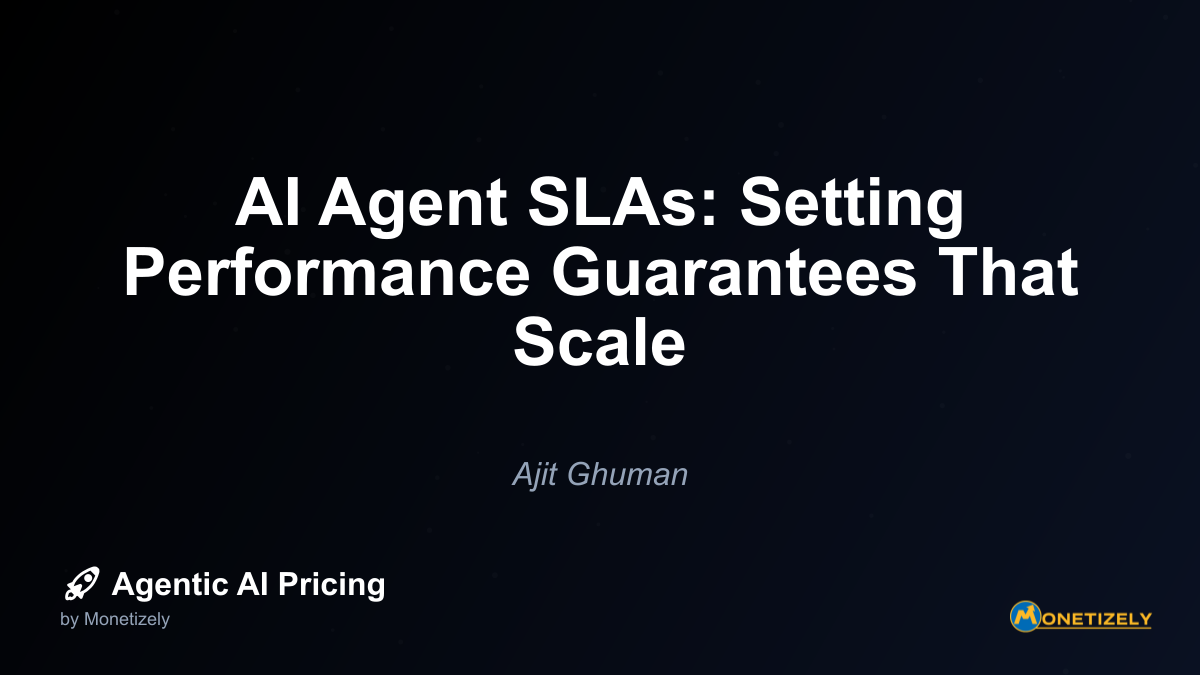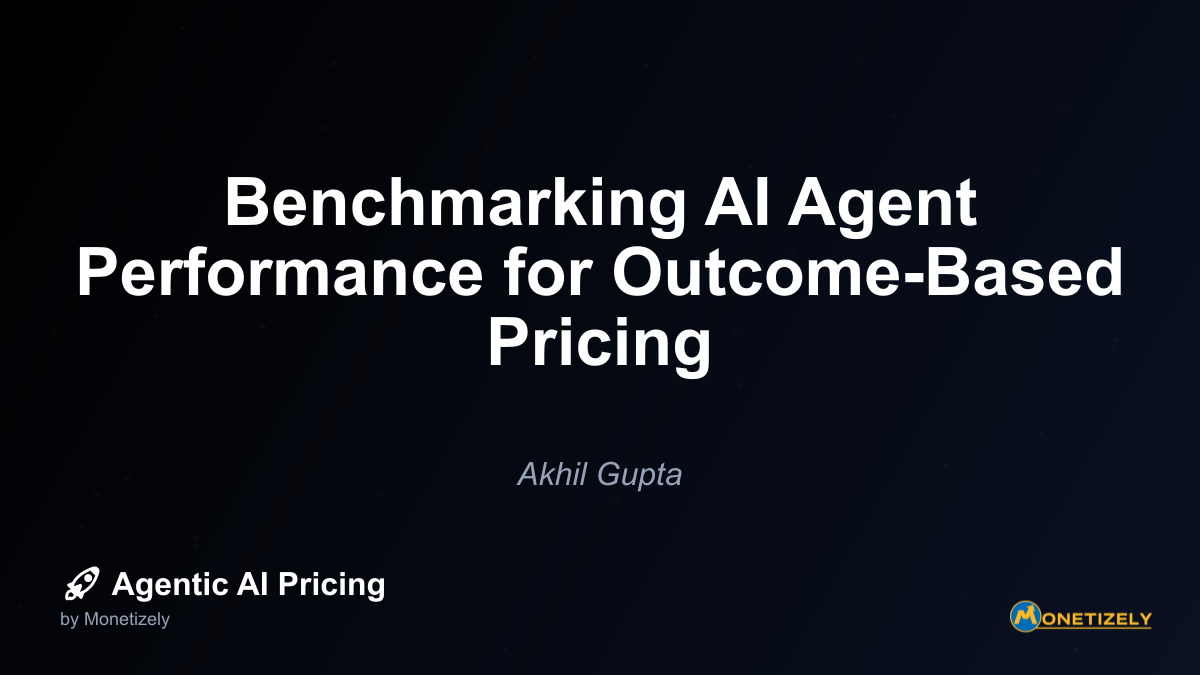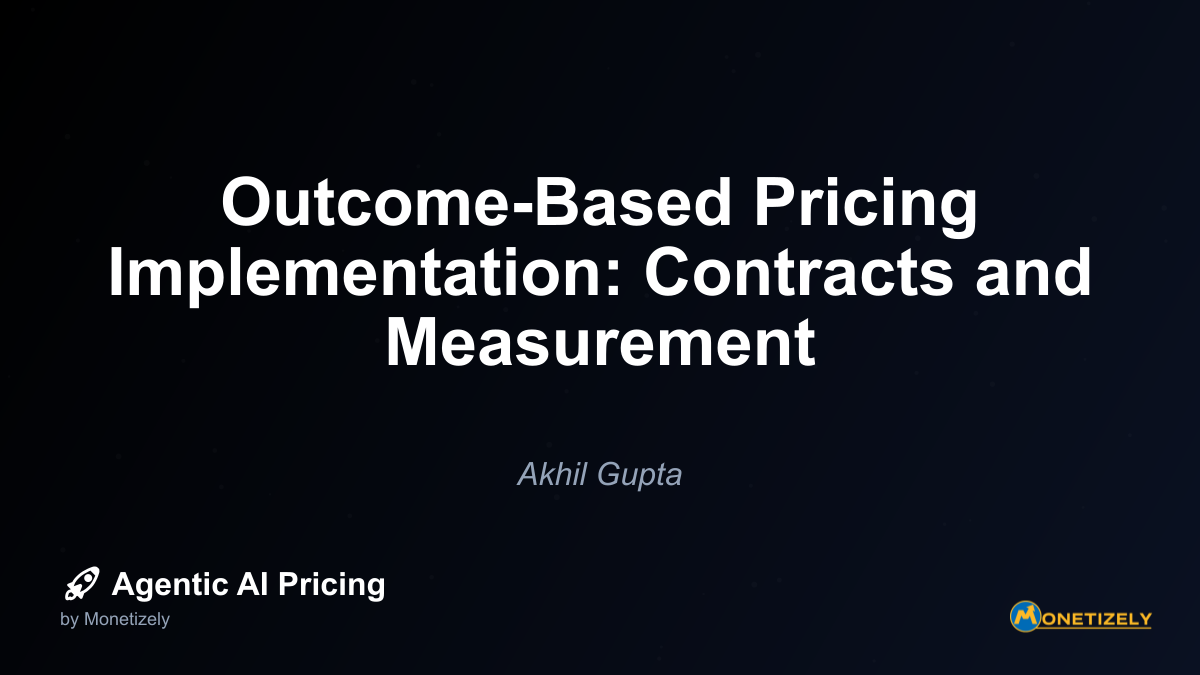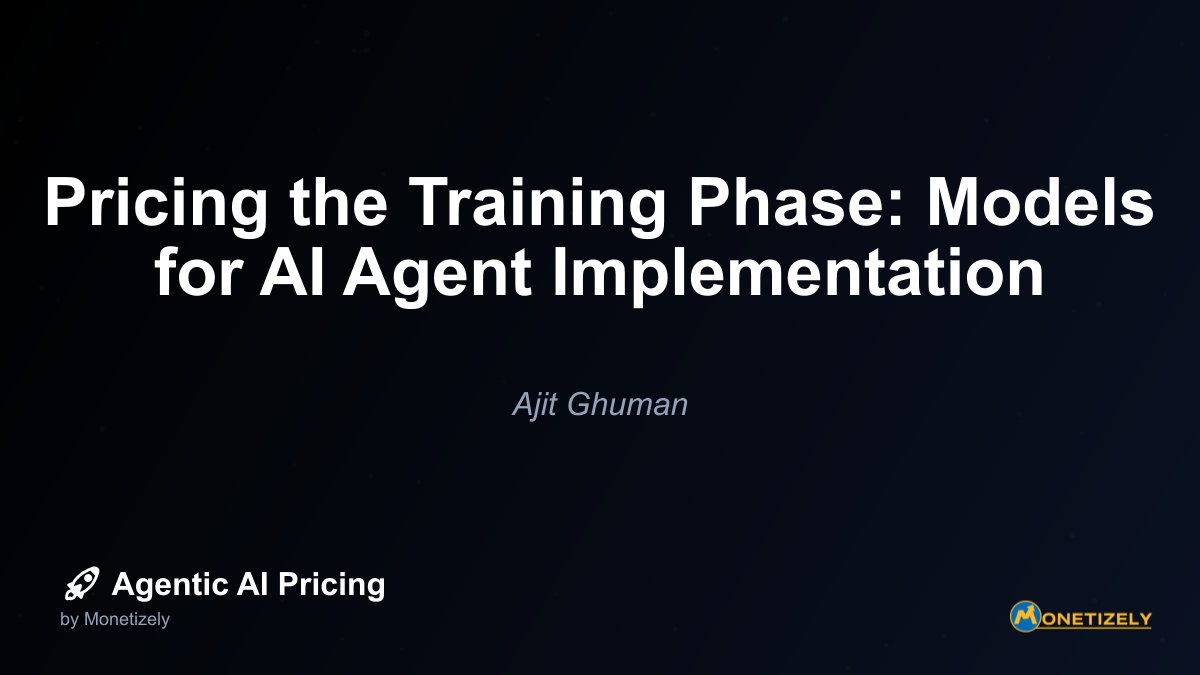· Akhil Gupta · Implementation · 12 min read
Pricing for AI Agent Customization: Models for Tailored Solutions
AI and SaaS Pricing Masterclass
Learn the art of strategic pricing directly from industry experts. Our comprehensive course provides frameworks and methodologies for optimizing your pricing strategy in the evolving AI landscape. Earn a professional certification that can be imported directly to your LinkedIn profile.
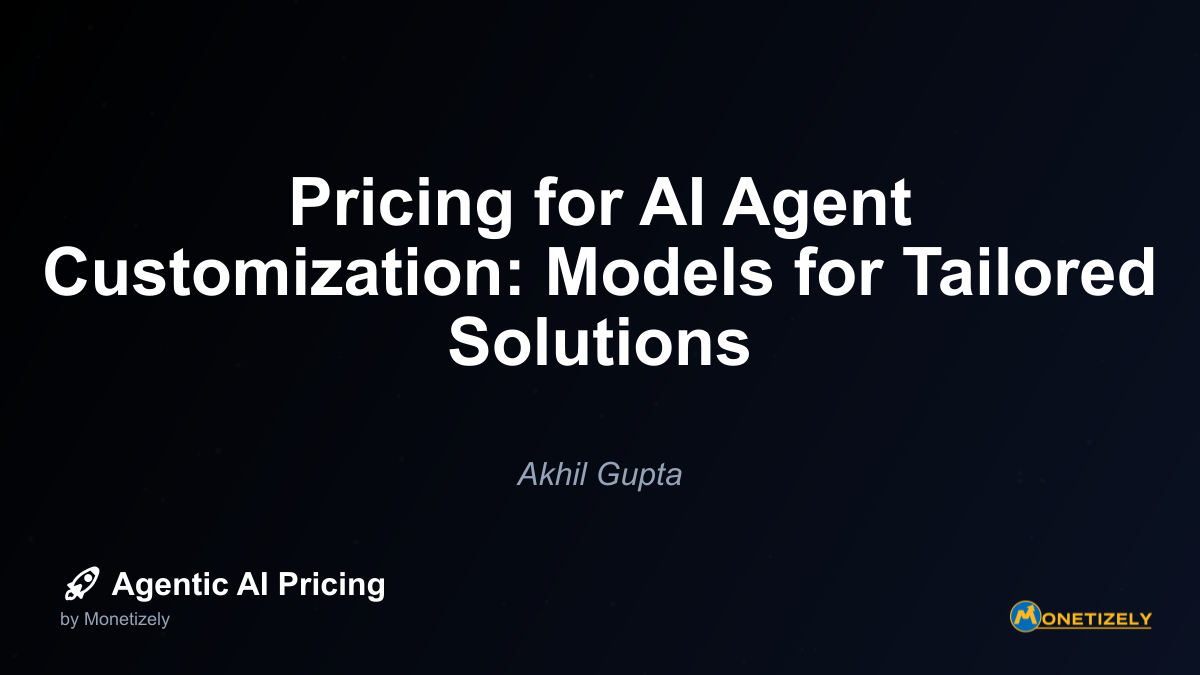
Pricing for AI agent customization has become a critical consideration for businesses implementing tailored solutions. As organizations increasingly recognize that one-size-fits-all AI approaches fall short of addressing their unique needs, customization services have emerged as essential components of the AI implementation journey. However, determining appropriate pricing models for these services presents significant challenges for both providers and customers.
The Evolution of AI Agent Customization Pricing
The AI agent customization market has undergone rapid transformation in recent years. According to market research, the global AI agent market was valued at approximately $5.1-5.4 billion in 2023-2024 and is projected to grow exponentially to around $47-50 billion by 2030, representing a compound annual growth rate (CAGR) of approximately 45%. This explosive growth reflects the increasing demand for tailored AI solutions across industries.
Traditional pricing models for software customization have proven inadequate for AI agent services due to the unique characteristics of these technologies. Unlike conventional software, AI agents require ongoing training, monitoring, and refinement, creating a continuous relationship between provider and customer rather than a one-time implementation.
“The AI agent customization pricing landscape in 2023-2025 is transitioning from simple usage-based models toward more predictable, outcome- and agent-based pricing aligned with business value,” notes a recent Boston Consulting Group (BCG) report. This shift acknowledges that the value of AI agents extends beyond computational resources to include the tangible business outcomes they generate.
Understanding the Cost Structure of AI Agent Customization
Before exploring pricing models, it’s essential to understand the underlying cost structure that providers must consider when offering customization services. These costs typically fall into several categories:
1. Development and Implementation Costs
The baseline costs for AI agent customization vary significantly based on complexity:
| AI Agent Type | Description | Cost Range (USD) |
|---|---|---|
| Reactive | Simple input-response, no memory | $20,000 - $35,000+ |
| Contextual | Session memory, multitask flows | $40,000 - $70,000+ |
| Goal-Based | Decision-making based on objectives | $20,000 - $50,000 |
| Utility-Based | Action based on expected utility | $40,000 - $80,000 |
| Learning | Learns from interactions | $75,000 - $150,000 |
| Multimodal | Handles text, voice, images, video | $100,000 - $250,000+ |
These figures represent the initial development costs and don’t include ongoing operational expenses. As AI complexity increases, so do the associated costs due to increased resource requirements, specialized expertise, and more extensive testing needs.
2. Integration Costs
Connecting AI agents to existing systems represents a significant portion of customization expenses:
| Integration Type | Typical Cost Range (USD) | Description |
|---|---|---|
| Basic API connection (REST/GraphQL) | $1,000–$3,000+ | Standard connections to tools and databases |
| OAuth 2.0 security setup | $1,500–$4,000+ | Ensuring secure authentication mechanisms |
| Real-time sync (e.g., calendar, CRM) | $2,000–$6,000+ | Ongoing data synchronization requirements |
| Third-party SDK/tool embedding (Stripe, Zapier) | $2,500–$5,000+ | Incorporating external platforms/services |
| Advanced tool orchestration (multi-agent pipelines) | $4,000–$10,000+ | Complex workflows integrating multiple AI components or agents |
Integration costs are affected by the technology stack, security needs, and organizational maturity with AI tools. Integration complexity and thorough testing substantially impact both upfront and ongoing expenses.
3. Infrastructure and Operational Costs
Ongoing expenses include:
- Compute resources: Cloud hosting, storage, and bandwidth for training and running AI models
- Inference costs: The expense of running AI models in real-time, particularly with large language or multimodal models
- Maintenance and updates: Regular updates, bug fixes, and feature enhancements
- Monitoring and compliance: Auditing, logging, and monitoring systems, especially important in regulated industries
- Human oversight: Data scientists, ML engineers, compliance officers, and domain experts for performance monitoring and incident handling
Core Pricing Models for AI Agent Customization
Based on industry analysis and expert insights, several pricing models have emerged as dominant approaches for AI agent customization services:
1. Usage-Based Pricing
Usage-based pricing ties costs directly to the consumption of AI agent resources, typically measured in terms of:
- API calls or requests
- Compute time or processing power
- Data volume processed
- Token usage (for language models)
Advantages:
- Scales naturally with customer usage
- Aligns costs with actual resource consumption
- Lower barrier to entry for customers
Disadvantages:
- Unpredictable costs for customers
- May discourage usage at scale
- Doesn’t necessarily reflect business value delivered
Real-World Example: Microsoft prices its AI agent usage at approximately $4 per hour of agent activity, charging customers based on computing time. While this approach provides flexibility, it can lead to cost unpredictability for customers with fluctuating usage patterns.
2. Agent-Based Pricing
This model treats AI agents as digital employees or “seats” with their own associated fees, either through subscription or one-time purchases.
Advantages:
- Predictable costs for customers
- Simpler to understand and budget for
- Reflects the autonomous nature of AI agents
Disadvantages:
- May not scale efficiently with usage
- Doesn’t account for varying complexity of tasks
- Could lead to underutilization if agents aren’t needed continuously
Real-World Example: OpenAI reportedly offers a high-end research agent for approximately $20,000 per month, reflecting the value of a PhD-level digital researcher. This approach positions the AI agent as a specialized digital worker with corresponding compensation.
3. Outcome-Based Pricing
This model ties pricing directly to the business outcomes or results achieved by the AI agent, such as:
- Revenue generated
- Cost savings realized
- Productivity improvements
- Customer satisfaction metrics
- Specific business KPIs
Advantages:
- Directly aligns with business value
- Reduces risk for customers
- Creates shared incentives for success
Disadvantages:
- Complex to measure and attribute outcomes
- Requires sophisticated tracking mechanisms
- May involve lengthy negotiations to define success metrics
Real-World Example: Some customer service AI providers charge based on successful query resolutions rather than simple interactions. For instance, a provider might charge $X per successfully resolved customer inquiry without human intervention, creating direct alignment between costs and outcomes.
4. Tiered and Hybrid Models
These models combine elements of the approaches above, often with a base fee plus variable components.
Advantages:
- Balances predictability with usage-based scaling
- Can be tailored to specific customer needs
- Provides flexibility while ensuring minimum revenue
Disadvantages:
- More complex to explain and implement
- May require sophisticated billing systems
- Could create confusion about total costs
Real-World Example: Salesforce employs a hybrid model that combines traditional user seats with AI agent fees. They charge approximately $2 per conversation handled by AI agents in addition to their base platform fees, creating a balance between fixed and variable costs.
Strategic Factors Influencing Pricing Decisions
Beyond the basic pricing models, several strategic factors should influence how organizations approach AI agent customization pricing:
1. Value Metric Identification
The first step in developing an effective pricing strategy is identifying the right value metrics—measurable indicators that reflect the value delivered to customers. According to industry experts, successful AI agent pricing must start by defining clear value metrics that reflect the AI agent’s impact, such as:
- Tasks completed
- Time saved
- Customer satisfaction improvements
- Error reduction rates
- Revenue generation or cost savings
For example, Decagon uses resolution rates as their primary value metric, while Salesforce counts conversations. The key is selecting metrics that directly correlate with the business value customers receive.
2. Customer Segmentation and Willingness to Pay
Different customer segments have varying willingness to pay based on the value they derive from AI agent customization. Key segmentation factors include:
- Industry vertical (healthcare, finance, retail, etc.)
- Company size and resources
- Strategic importance of AI capabilities
- Regulatory requirements
- Competitive landscape
Research indicates that specialized AI agents in regulated industries like healthcare, finance, and legal command premium pricing due to the higher value they deliver and the specialized knowledge required for implementation.
3. Customization Depth and Complexity
The extent of customization required significantly impacts appropriate pricing strategies:
Minor Tweaks and Configurations
- Adjusting parameters within existing AI frameworks
- Customizing user interfaces or interaction flows
- Training on limited domain-specific data
- Appropriate for: Fixed-fee or lower-tier subscription models
Moderate Adaptations
- Integration with multiple enterprise systems
- Custom workflows and business logic
- Training on substantial proprietary data
- Appropriate for: Tiered subscription or hybrid models
Major Customizations
- Building custom AI models from scratch or extensive fine-tuning
- Complex multi-agent orchestration
- Integration with legacy systems or specialized hardware
- Appropriate for: Project-based pricing with ongoing support fees or outcome-based models
4. Competitive Positioning
The competitive landscape significantly influences pricing strategies. Major players like OpenAI, Microsoft, Google, and Salesforce have established different approaches:
| Company / Model | Pricing Model | Pricing Basis | Pricing Characteristics |
|---|---|---|---|
| Salesforce | Usage-based + hybrid | Per conversation ($2 per conversation) | Charges based on AI interactions; includes traditional user seats plus AI agent fees |
| Microsoft | Usage-based | $4 per hour of AI agent activity | Charges customers based on agent computing time; usage can fluctuate |
| OpenAI | Usage-based / API calls | Tokens or compute units usage | Charges primarily on API consumption (tokens) that can be mapped to agent actions; flexible for different integrations |
| Boutique AI developers | Project-based custom pricing | Flat project fees and retainers | High-touch custom AI agents tailored to industry needs; pricing ranges widely |
Organizations must position their pricing in relation to these established players, either competing directly or differentiating through specialized offerings or unique value propositions.
Case Studies: Successful AI Agent Customization Pricing
Examining real-world implementations provides valuable insights into effective pricing approaches:
Case Study 1: Doxy.me Telemedicine Support
Implementation: Doxy.me deployed Retell AI as the first contact for free users, which rapidly reduced their customer service workload and lowered wait times for premium users.
Results:
- Increased handled calls from 5% to over 30%
- Enabled prioritization of paid users
- Optimized operational costs
Pricing Approach: Tiered pricing model where free users received AI support while premium users gained priority access to human agents, creating a clear value differentiation that supported their business model.
Key Lesson: AI agent customization pricing can be integrated into existing tiered service offerings to create clear value differentiation between customer segments.
Case Study 2: H&M Virtual Shopping Assistant
Implementation: Facing high cart abandonment and slow replies, H&M introduced an AI agent for personalized recommendations and FAQs.
Results:
- Resolved 70% of queries autonomously
- Increased conversion rates by 25% during chatbot interactions
- Tripled response speed
- Significantly reduced support costs while increasing revenue per visitor
Pricing Approach: Internal investment justified by measurable ROI through increased conversions and reduced support costs, demonstrating the effectiveness of outcome-based evaluation.
Key Lesson: When AI agents directly impact revenue metrics, outcome-based or ROI-justified pricing models align costs with tangible business results.
Case Study 3: IBM AIOps Agent
Implementation: IBM deployed an AI operations agent to filter IT alerts, identify root causes, and automate incident handling to counter alert fatigue and speed resolution.
Results:
- Reduced mean time to resolution for IT incidents
- Decreased false positive alerts
- Improved IT team productivity by focusing on genuine issues
Pricing Approach: Subscription model with tiered pricing based on the scale of IT operations and number of systems monitored, creating a scalable pricing structure aligned with the size and complexity of the customer environment.
Key Lesson: For operational AI agents, pricing scaled to environment size and complexity creates a fair model that grows with customer needs.
Implementation Challenges and Pricing Implications
Several technical challenges in AI agent customization have direct implications for pricing strategies:
1. Data Quality and Availability
Challenge: Obtaining and maintaining access to high-quality, relevant training data is crucial for model accuracy and performance.
Pricing Implication: Customers with well-structured, clean data may qualify for lower pricing tiers, while those requiring extensive data preparation should expect higher costs. Some providers offer data preparation as a separate line item with its own pricing structure ($5,000-$50,000 depending on complexity).
2. Model Explainability and Trust
Challenge: Ensuring model explainability to build trust, facilitate debugging, and comply with regulations—especially important in sensitive industries.
Pricing Implication: Premium pricing for explainable AI models that provide transparency into decision-making, particularly in regulated industries where this capability delivers significant value.
3. Integration Complexity
Challenge: Connecting AI agents to existing systems and workflows can be technically challenging and time-consuming.
Pricing Implication: Tiered integration pricing based on the number and complexity of system connections, with standard connectors priced lower than custom integrations.
4. Ongoing Maintenance and Model Drift
Challenge: AI models experience performance degradation over time (model drift) and require regular monitoring and retraining.
Pricing Implication: Subscription models that include ongoing maintenance and retraining services, potentially with SLAs guaranteeing model performance levels.
Emerging Trends in AI Agent Customization Pricing
Looking forward, several trends are shaping the future of AI agent customization pricing:
1. Shift to Digital Labor Pricing
AI agents are increasingly being priced as digital workers rather than software tools. This approach treats AI agents as members of the workforce with their own “salaries” or costs, reflecting their autonomous capabilities.
As one industry analyst notes, “The traditional per-seat SaaS pricing model is being replaced or supplemented by models where AI agents themselves are treated as users or seats with their own fees, reflecting their autonomous workload.”
2. Tokenized and Micro-Transaction Models
Blockchain-inspired approaches are emerging that enable granular, pay-per-task or pay-per-output pricing models. These approaches align payment directly with results and make AI agent services more scalable and customizable.
For example, some platforms are implementing token economies that reward developers as agents improve, encouraging quality and innovation in the AI agent ecosystem.
3. Domain-Specific Premium Pricing
As AI agents become more specialized for specific industries or functions, pricing is increasingly reflecting the domain-specific value delivered. Specialized agents for legal, medical, financial, and other regulated industries command premium pricing due to their specialized capabilities and compliance features.
4. Multi-Agent System Pricing
The trend toward multi-agent orchestrations handling complex workflows creates new pricing challenges. Providers are developing pricing models that account for the complexity of agent interactions and the overall system capabilities rather than individual agent pricing.
5. Regulatory-Aware Pricing
As AI regulations evolve, pricing models are incorporating compliance costs and capabilities. Premium tiers often include enhanced governance, auditability, and compliance features necessary in regulated industries.
Developing a Strategic Pricing Framework for AI Agent Customization
Based on the research and analysis above, organizations can follow these steps to develop an effective pricing strategy for AI agent customization:
Step 1: Define Value Metrics and ROI Measurement
Start by establishing clear metrics that capture the value delivered to customers. The ROI formula for AI agents typically includes:
ROI = [(Revenue Gains + Cost Savings + Productivity Improvements + Risk Mitigation Value) - (Implementation + Operational + Training + Maintenance Costs)] / Total Investment × 100
Successful companies identify 2-3 primary value metrics that directly correlate with customer success and build their pricing models around these indicators.
Step 2: Segment the Market and Differentiate Offerings
Develop distinct offerings for different customer segments based on:
- Industry vertical requirements
- Scale of implementation
- Complexity of customization
- Integration needs
- Support requirements
Each segment may require a different pricing approach based on their specific needs and willingness to pay.
Step 3: Select Primary and Secondary Pricing Models
Based on customer needs and value delivery, select a primary pricing model (usage-based, agent-based, outcome-based, or hybrid) and consider secondary components to balance predictability with scalability.
For example, a primary subscription model might be supplemented with usage-based components for high-volume scenarios, creating a balanced approach that works across customer segments.
Step 4: Develop a Tiered Structure
Create a tiered pricing structure that allows customers to start small and scale up as their needs grow. Typical tier structures include:
Basic Tier:
- Limited customization options
- Standard integrations only
- Basic monitoring and support
- Suitable for testing and small-scale deployments
Professional Tier:
- Moderate customization capabilities
- Multiple system integrations
- Enhanced monitoring and regular retraining
- Suitable for departmental or specific use case deployments
Enterprise Tier:
- Extensive customization options
- Custom integrations with legacy systems
- Advanced monitoring
Co-Founder & COO
Akhil is an Engineering leader with over 16+ years of experience in building, managing and scaling web-scale, high throughput enterprise applications and teams. He has worked with and led technology teams at FabAlley, BuildSupply and Healthians. He is a graduate from Delhi College of Engineering and UC Berkeley certified CTO.
Pricing Strategy Audit
Let our experts analyze your current pricing strategy and identify opportunities for improvement. Our data-driven assessment will help you unlock untapped revenue potential and optimize your AI pricing approach.

